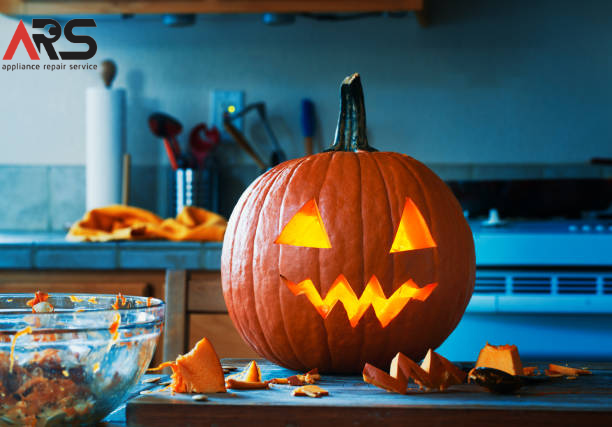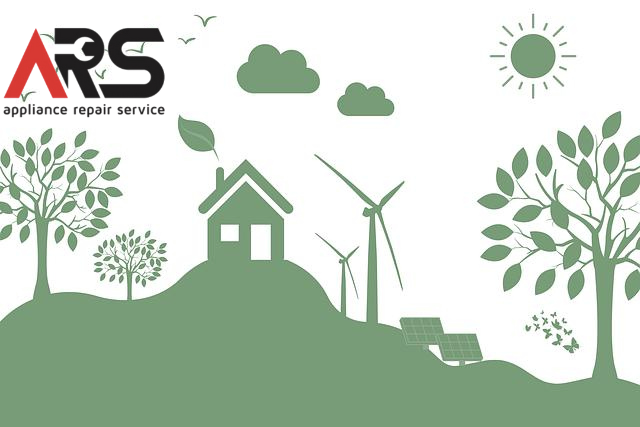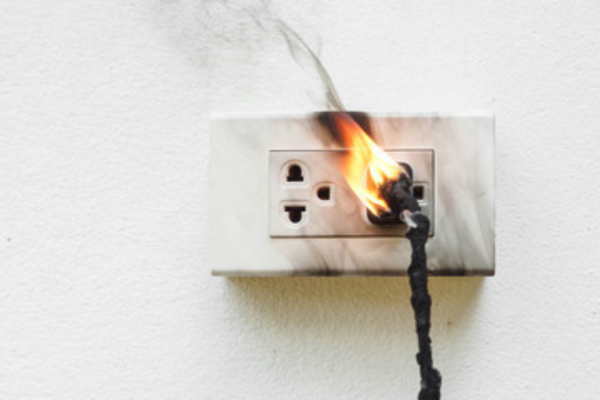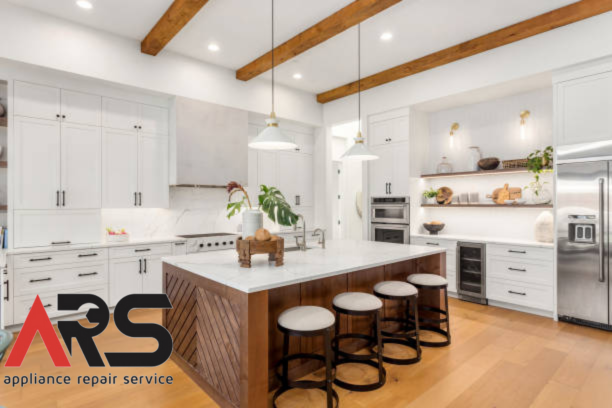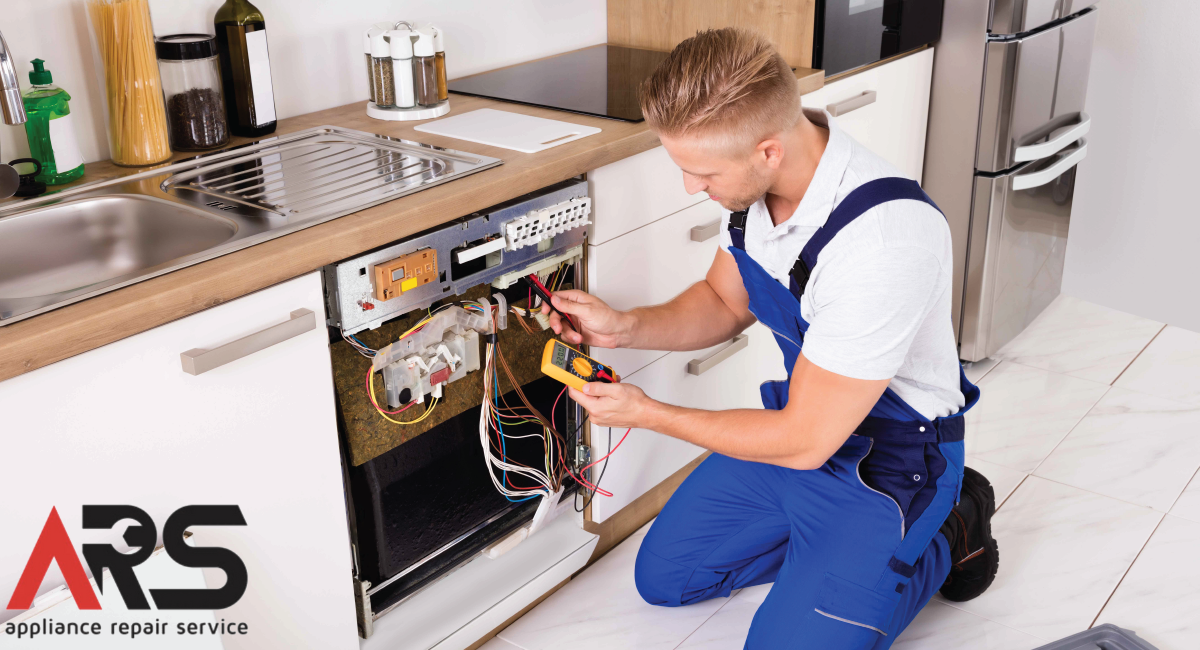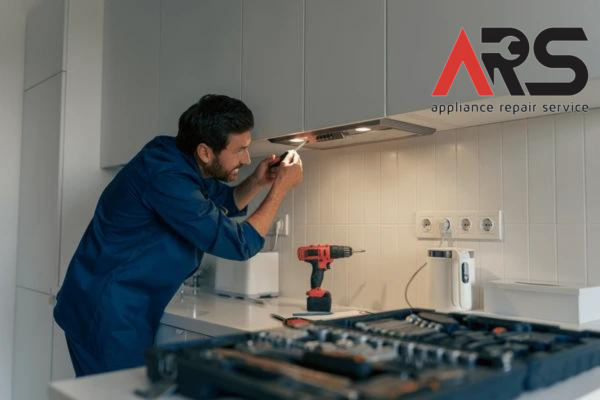
Stove Repair
It’s another rainy day in the GTA, and spring showers are in full effect. As we transition through the seasons, keeping your home appliances in top shape becomes increasingly important. When it comes to stove repair, ensuring your appliance is functioning properly is not just about convenience; it’s a matter of safety and energy efficiency. In this comprehensive guide, we’ll delve into the common issues that can affect your stove’s performance, from heating elements and burners to gas leaks and strange noises.
Our focus is to provide you with a thorough understanding of the potential problems you may encounter with your stove, as well as practical DIY troubleshooting tips to address them. Whether you’re dealing with a stove that won’t heat up, a burner that stops working, or a gas stove that smells like gas, we’ll cover it all. Additionally, we’ll discuss when it’s crucial to seek professional repair services for more complex or hazardous issues.
Let’s get started by exploring the most common faults and malfunctions that can occur with stoves and how to address them effectively. This guide aims to equip you with the knowledge you need to keep your stove running smoothly and safely throughout the year.
Why Is My Stove Not Heating Up?
A stove that doesn’t heat up can be frustrating and disrupt your daily routine. Let’s examine some common causes and troubleshooting tips to address this issue:
- Faulty Burners or Heating Elements: One of the most common reasons for a stove not heating up is a faulty burner or heating element. Over time, these components may wear out or malfunction, resulting in inefficient or no heating.
- Electrical Issues: Electric stoves rely on a consistent power supply to function properly. Issues such as a tripped circuit breaker, loose wiring, or a blown fuse can prevent your stove from receiving the power it needs to heat up.
- Control Knob Problems: Sometimes, the control knobs that regulate heat levels can become loose or damaged, leading to inconsistent or no heat from your stove.
- Thermostat Malfunction: If your stove uses a thermostat to regulate temperature, a malfunctioning thermostat can prevent the stove from reaching the desired heat levels.
Troubleshooting Tips:
- Check the Burners or Heating Elements: Inspect the burners or heating elements for visible signs of damage, such as cracks or corrosion. If you find any, consider replacing the damaged parts.
- Test the Electrical Connection: Make sure your stove is properly plugged in and that the circuit breaker is in the “on” position. If the breaker keeps tripping, it may indicate a more serious electrical issue.
- Inspect the Control Knobs: Verify that the control knobs are securely attached and functioning as expected. Replace any damaged or faulty knobs.
- Test the Thermostat: If your stove uses a thermostat, you may need to test it using a multimeter to ensure it’s working properly. A faulty thermostat may require replacement.
In some cases, these troubleshooting steps may resolve the issue, but if the stove still doesn’t heat up, it may be time to seek professional repair services. Identifying and addressing the underlying problem promptly can prevent further damage and ensure the safety and efficiency of your stove.
How to Fix a Stove That Won’t Turn On
When your stove refuses to turn on, it can be a sign of a more serious issue. Here are some common causes and troubleshooting steps to help you diagnose and fix the problem:
- Electrical Supply Issues: A stove that won’t turn on might be due to problems with the electrical supply, such as a tripped circuit breaker, blown fuse, or loose wiring.
- Control Panel Malfunctions: Electronic stoves may have control panels that can malfunction due to a software error, damaged buttons, or defective components.
- Power Cord Problems: The power cord can become damaged over time or during installation, leading to a lack of power supply to the stove.
- Defective Switches or Relays: Stoves have switches and relays that control the power flow to the heating elements. Defective switches or relays can prevent the stove from turning on.
Troubleshooting Tips:
- Inspect the Electrical Supply: Check your home’s electrical panel for tripped breakers or blown fuses. Reset any tripped breakers and replace blown fuses.
- Examine the Power Cord: Inspect the power cord for visible signs of damage such as fraying, cuts, or burn marks. Replace the cord if necessary.
- Check the Control Panel: For electronic stoves, ensure that the control panel is functioning correctly. Test the buttons and dials for responsiveness.
- Test the Switches and Relays: If you suspect faulty switches or relays, you may need to use a multimeter to test their continuity. Replace any defective components.
If these troubleshooting steps don’t resolve the issue, you may be dealing with a more complex electrical problem that requires professional repair. Addressing the underlying cause promptly is crucial for maintaining your stove’s safety and performance.
What to Do When a Stove Element Stops Working
A stove element that stops working can significantly impact your cooking experience. To resolve this issue, you need to identify the underlying cause and take appropriate action. Here are some possible causes and steps to fix the problem:
- Burnt Out Element: The most common reason for a stove element to stop working is that it has burned out. This can happen over time due to regular use.
- Loose Connections: Loose wiring connections between the element and the stove can interrupt power flow, preventing the element from heating up.
- Control Switch Issues: The control switch that regulates the element’s power may be faulty or damaged, causing the element not to work.
- Element Socket Malfunction: The element socket may be damaged or worn out, leading to poor contact with the element and causing it to stop working.
Troubleshooting Tips:
- Check the Element: Inspect the element for visible signs of damage, such as cracks or burn marks. If the element looks damaged, it may need to be replaced.
- Inspect Connections: Check the wiring connections to ensure they are secure and free from corrosion. Tighten any loose connections you find.
- Test the Control Switch: If the control switch is faulty, it may need to be tested with a multimeter for continuity. A defective switch should be replaced.
- Examine the Element Socket: Look for any damage or wear in the element socket. If the socket appears damaged, it may need to be replaced.
- Replace the Element: If you find that the element is burnt out, replace it with a new one that matches the specifications of your stove.
Addressing these issues promptly can prevent further damage to your stove and ensure that it operates safely and efficiently. If you’re not comfortable working with electrical components, consider contacting a professional stove repair service to handle the replacement and repairs.
Why Is My Stove Making Strange Noises?
Unusual noises coming from your stove can be concerning and may indicate an underlying issue that needs attention. Here are some common causes of strange noises and ways to address them:
- Loose or Worn Components: Over time, parts of your stove can become loose or worn out, causing rattling, clicking, or buzzing noises.
- Gas Flow Issues: For gas stoves, strange hissing or popping noises may indicate problems with gas flow or burner performance.
- Electrical Problems: Electric stoves can produce buzzing or humming noises due to electrical issues, such as a failing transformer or faulty wiring.
- Cooling Fan Malfunction: Many stoves have cooling fans to regulate internal temperatures. A malfunctioning fan may produce loud, unusual noises.
Troubleshooting Tips:
- Check for Loose Parts: Inspect your stove for loose parts such as screws, panels, or knobs. Tighten any loose components to reduce noise.
- Inspect Burners and Gas Lines: For gas stoves, ensure burners and gas lines are clear of debris and properly aligned. If you hear hissing, it could indicate a gas leak—take immediate action and seek professional help.
- Examine Electrical Components: For electric stoves, check the wiring and connections for any signs of wear or damage. Replace any damaged components.
- Listen to the Cooling Fan: If the noise seems to come from the cooling fan, listen for any signs of malfunction such as scraping or grinding sounds. If the fan is faulty, consider replacing it.
When to Seek Professional Help:
If you’ve tried troubleshooting the noise and the problem persists, or if you suspect a gas leak, it’s important to contact a professional appliance repair service. Unusual noises can signal potential hazards, so addressing them quickly is key to maintaining a safe and efficient stove.
How to Fix a Gas Stove That Smells Like Gas
A gas stove that emits a gas smell can be a serious safety concern. It is essential to address the issue promptly to avoid potential hazards. Here are some common causes and steps to handle a gas stove that smells like gas:
- Loose Connections: Gas leaks often occur due to loose connections in the gas supply line or at the burner.
- Faulty Valves: A malfunctioning gas valve can lead to uncontrolled gas flow, causing a noticeable smell of gas.
- Damaged Gas Line or Fittings: Cracked or damaged gas lines and fittings can result in gas leakage.
- Improper Burner Alignment: If the burners are not properly aligned, gas can escape without being fully ignited, leading to a gas smell.
Troubleshooting Tips:
- Check Gas Connections: Inspect all connections in the gas supply line and around the burners for signs of looseness or wear. Tighten any loose connections and replace damaged fittings.
- Test the Gas Valves: Verify that the gas valves are functioning correctly and not leaking gas. A faulty valve may require replacement.
- Inspect Gas Lines: Examine the gas lines for any visible signs of damage, such as cracks or punctures. Replace any damaged lines.
- Ensure Proper Burner Alignment: Check that the burners are aligned correctly and securely fastened. Misaligned burners can cause gas to escape without igniting.
Safety Precautions:
- Ventilate the Area: If you detect a gas smell, open windows and doors to allow the area to ventilate.
- Avoid Igniting Flames: Do not use any open flames, matches, or lighters near the stove or any area where you detect gas.
- Shut Off the Gas: If you suspect a gas leak, turn off the main gas supply immediately and contact your gas company or a professional repair technician.
When to Seek Professional Help:
If you are unable to identify and resolve the source of the gas smell, seek professional assistance immediately. Gas leaks can be dangerous and should be handled by experienced technicians to ensure your safety and the safety of your home. Promptly addressing gas leaks can prevent potential accidents and keep your stove operating efficiently.
When Should You Call a Professional Stove Repair Service?
While DIY troubleshooting can resolve many stove issues, some problems require the expertise of a professional repair technician. Here are scenarios when it’s crucial to seek professional stove repair services:
- Complex Electrical Issues: If your stove experiences electrical malfunctions such as wiring problems, control board failures, or power supply issues, it’s best to leave the repairs to a qualified technician. Working with electrical components can be dangerous without proper training and expertise.
- Gas Leaks: Gas leaks pose a significant safety risk and require immediate attention from professionals. Attempting to fix a gas leak without proper knowledge and equipment can lead to accidents, fires, or explosions. If you smell gas or suspect a leak, evacuate the area and contact a professional repair service and your gas company immediately.
- Specialized Repairs: Certain stove repairs may require specialized knowledge or tools that are not readily available to the average homeowner. Examples include replacing internal components, repairing complex electronic systems, or troubleshooting advanced gas stove issues. Professional technicians have the training and resources to handle these tasks safely and effectively.
- Preservation of Warranty: Attempting DIY repairs on your stove may void its warranty if not done correctly. Manufacturers often require repairs to be performed by authorized technicians to maintain warranty coverage. Hiring a professional repair service ensures that your stove remains under warranty protection.
- Safety and Efficiency: Professional technicians are equipped to diagnose and repair stove issues accurately, ensuring the safety and efficiency of your appliance. Their expertise can prevent further damage, extend the lifespan of your stove, and minimize the risk of future breakdowns.
Benefits of Professional Stove Repair:
- Expert Diagnosis: Professional technicians have extensive experience diagnosing stove problems and can provide accurate assessments of repair needs.
- Quality Repairs: Professionals use high-quality parts and tools to perform repairs, ensuring long-lasting solutions and optimal performance.
- Safety Assurance: Professional repair services prioritize safety protocols to protect you, your home, and your appliance during repairs.
- Convenience: Hiring a professional repair service saves you time and effort, allowing you to focus on other priorities while your stove is repaired efficiently.
By recognizing the limitations of DIY repair and knowing when to seek professional help, you can ensure the timely and effective resolution of stove issues while maintaining safety and performance standards. Investing in professional stove repair services offers peace of mind and helps prolong the life of your appliance.
DIY Stove Repair: Tips and Precautions
Performing DIY stove repairs can be a cost-effective solution for minor issues, but it requires careful attention and adherence to safety measures. Here are some DIY tips and precautions to keep in mind when attempting stove repairs:
- Safety First: Always prioritize safety when working on your stove. Turn off the power source for electric stoves and shut off the gas supply for gas stoves before beginning any repairs.
- Proper Tools and Equipment: Use the appropriate tools and equipment for the job. Improper tools can cause damage or increase the risk of injury.
- Consult the Manual: Refer to the stove’s user manual for specific instructions on repairs and maintenance. The manual often contains valuable information about your stove’s components and troubleshooting steps.
- Start with Simple Troubleshooting: Begin with basic troubleshooting steps such as checking power supply, inspecting burners, and ensuring proper connections.
- Handle Electrical Components with Care: If you need to work with electrical components, be cautious. Use insulated tools and wear protective gloves to avoid electric shocks.
Common DIY Stove Repair Tips:
- Replace Burnt Out Elements: If you identify a faulty element, make sure to replace it with a new one that matches your stove’s specifications.
- Clean and Adjust Burners: For gas stoves, clean the burners regularly and ensure they are properly aligned to prevent gas leaks and ensure efficient ignition.
- Test Switches and Knobs: Inspect switches and control knobs for signs of damage or wear. Replace faulty components to maintain proper stove functionality.
- Check Gas Lines for Leaks: For gas stoves, use soapy water to check gas lines for leaks. Bubbles will form if there is a leak. If you find one, shut off the gas and seek professional help.
- Inspect Control Panel: For electronic stoves, ensure the control panel is functioning correctly. Look for any error codes and follow the manual’s instructions for resolving them.
Precautions and When to Stop DIY Repairs:
- Know Your Limits: Recognize when a repair is beyond your skill level and seek professional help. Complex repairs involving gas or electricity can be hazardous.
- Avoid Voiding Warranties: If your stove is under warranty, check the terms before attempting DIY repairs to avoid voiding the warranty.
- Keep Emergency Contacts Handy: Have emergency contacts such as your local gas company or a professional repair service available in case of serious issues.
By following these DIY tips and precautions, you can safely address minor stove issues and maintain your appliance. However, for more complex problems, it’s essential to seek professional assistance to ensure your stove’s safety and performance.
How to Diagnose and Repair Stove Temperature Control Issues
Temperature control issues in stoves can lead to undercooked or overcooked food and inefficient energy use. To ensure your stove maintains precise temperature control, it’s important to diagnose and address any underlying issues. Here are common causes and troubleshooting tips for temperature control problems:
- Faulty Thermostat: A malfunctioning thermostat can lead to inaccurate temperature readings, causing the stove to overheat or not reach the desired temperature.
- Broken Temperature Sensor: Electric and gas stoves may use a temperature sensor to monitor internal temperatures. A damaged sensor can cause temperature control problems.
- Control Panel Malfunctions: Issues with the control panel, such as a defective temperature dial or digital display, can lead to inconsistent temperature settings.
- Inaccurate Calibration: Over time, the stove may lose its calibration, resulting in inaccurate temperature settings. This is more common in older stoves.
Troubleshooting Tips:
- Test the Thermostat: Use an oven thermometer to check the actual temperature inside the stove. If it doesn’t match the set temperature, the thermostat may need adjustment or replacement.
- Inspect the Temperature Sensor: For electric stoves, check the temperature sensor for signs of damage or malfunction. Replace the sensor if necessary.
- Check the Control Panel: Verify that the control panel is functioning correctly. Look for error codes or unresponsive buttons that may indicate a problem.
- Calibrate the Stove: If your stove has lost its calibration, refer to the user manual for instructions on how to recalibrate it. This may involve adjusting a calibration screw or resetting the control panel.
Repair Options:
- Replace the Thermostat: If the thermostat is faulty, replace it with a compatible part from the stove manufacturer.
- Replace the Temperature Sensor: A damaged temperature sensor should be replaced to ensure accurate temperature readings.
- Control Panel Repairs: If the control panel is malfunctioning, you may need to replace it or repair specific components such as buttons or dials.
- Professional Calibration: For older stoves or complex calibration issues, consider seeking professional assistance to recalibrate the stove accurately.
By following these troubleshooting steps and repair options, you can resolve stove temperature control issues and ensure your appliance operates efficiently and precisely. Proper temperature control is essential for safe and successful cooking, as well as optimal energy usage.
Tips for Maintaining Your Stove for Long-Term Efficiency
Proper maintenance is essential to keep your stove operating efficiently and safely over its lifespan. Follow these tips to ensure your stove stays in top condition:
- Regular Cleaning: Clean your stove regularly to prevent the buildup of grease, food residue, and other debris. Pay special attention to burners, heating elements, and control panels.
- Inspect and Clean Burners: For gas stoves, ensure burners are clear of blockages and properly aligned. For electric stoves, keep heating elements free of buildup for optimal performance.
- Check Seals and Gaskets: Inspect door seals and gaskets on your oven to ensure a proper fit and prevent heat from escaping during cooking. Replace damaged seals as needed.
- Monitor Control Knobs and Panels: Keep control knobs and panels clean and free of damage. Check for responsiveness and replace worn or broken parts promptly.
- Keep Ventilation Clear: Make sure the stove’s ventilation system, including the range hood, is clear of obstructions and working correctly to maintain proper airflow.
Preventative Measures:
- Avoid Overloading: Do not overload your stove’s burners or heating elements, as this can lead to uneven cooking and damage to the stove.
- Use Appropriate Cookware: Use cookware that matches the size of the stove’s burners or heating elements. Oversized or undersized cookware can cause inefficient heating.
- Manage Spills: Clean up spills promptly to prevent them from burning on the stove’s surface or damaging electrical components.
- Monitor Performance: Keep an eye on your stove’s performance for any signs of malfunction, such as uneven cooking, unusual noises, or inconsistent heating.
Routine Maintenance Tasks:
- Replace Filters: For range hoods and other ventilation systems, replace filters as recommended by the manufacturer to maintain airflow and reduce odors.
- Check Electrical Connections: Periodically inspect electrical connections for signs of wear or corrosion. Tighten loose connections to prevent power issues.
- Schedule Professional Servicing: Consider scheduling professional maintenance for your stove at least once a year. A technician can perform a thorough inspection and identify any potential issues.
By incorporating these maintenance tips into your routine, you can extend the lifespan of your stove and ensure it operates safely and efficiently. Regular care and attention help prevent major issues and contribute to a better cooking experience.
Conclusion
Maintaining a stove in good working condition is essential for safe, efficient, and enjoyable cooking. By understanding the common issues that can arise with stoves and how to troubleshoot and repair them, you can prevent minor problems from escalating into major malfunctions.
In this comprehensive guide, we have covered various aspects of stove maintenance and repair:
- Stove Element Malfunctions: Understanding how to troubleshoot and fix issues with non-working elements.
- Strange Noises: Diagnosing the causes of unusual sounds and how to address them.
- Gas Stove Safety: Identifying gas leaks and knowing how to safely handle them.
- DIY Repairs: Providing tips and precautions for safe and effective do-it-yourself stove repairs.
- Temperature Control Issues: Learning how to diagnose and resolve temperature-related problems.
- Professional Repairs: Recognizing when to call in an expert for more complex issues.
- Long-Term Maintenance: Offering tips for routine maintenance and care to keep your stove functioning optimally.
By following the advice provided in this guide, you can extend the life of your stove, maintain its efficiency, and ensure your cooking experience remains safe and enjoyable. However, remember that some issues require professional expertise, especially when it comes to gas leaks, complex electrical problems, and significant stove malfunctions.
For any questions or concerns about your stove, do not hesitate to contact a professional appliance repair service such as ARS Appliances Repair Service. Our experienced technicians are equipped to handle all types of stove repairs and maintenance, ensuring your appliance remains in top condition for years to come. Thank you for reading our guide on stove repair and maintenance! Contact us today.
